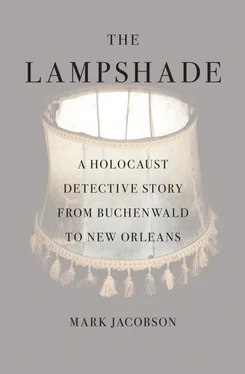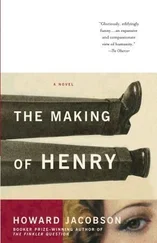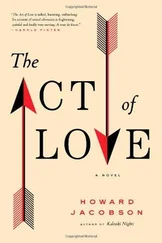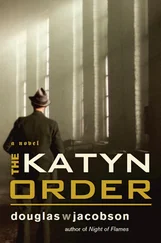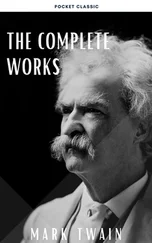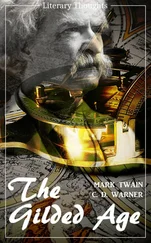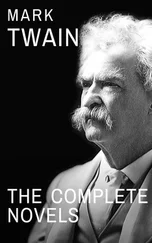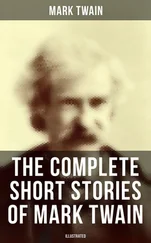Years ago a good friend of mine was on his deathbed. A grand, knock-around Heeb of the beatnik variety, once Muhammad Ali’s press agent, friend of Norman Mailer and Bugsy Siegel, he would die within the hour. He asked me to place my ear close to his mouth because, after a life of raconteur patter, he couldn’t talk above a whisper. He said he had two last things to say. The first was to ask me if I’d brought a joint because if he was going to die, he might as well go out higher than a kite. The second was a regret.
“I regret I never killed a Nazi,” my friend said.
I knew what he meant, of course. When we were kids, it was another schoolyard Holocaust topic along with the lampshades: if you saw the baby in the carriage and you knew it would grow up to be Hitler, would you strangle it or not? It was a strange image, nine-year-olds from Queens with their hands around the neck of a baby, but we all swore our unwavering willingness to do it. But these Nazis? These latter-day street punk malcontents on Lisztstrasse? These anti-antifas? Would it have been worth it to strangle them in their cribs?
We passed each other without so much as a nod, ships in the night. They didn’t know me, I didn’t know them. They were probably too busy dreaming of pummeling Indian merchants and throwing a rock through the window of a kebab shop to care about this big-nose Jew. It was another one of those universalist/particularist problems. If Nazis weren’t trying to kill you and turn you into a lampshade, this had to be progress, right?

TWELVE

I was in Mannheim, fifty miles south of Frankfurt, talking to Daniel Strauss, whose father, Heinz, or “Pappo,” was a Buchenwald prisoner from the summer of 1944 until the end of the war. “He was there, and before that in Auschwitz, when he was a teenager,” Daniel said of his father, now in his eighties and quite frail. “But he never talked about it. Except at night, when we heard him screaming from the nightmares.
“As a child, it scared me when he yelled,” recalled Daniel, a balding, friendly man in his fifties. A scholar and activist, the younger Strauss runs the Verband Deutscher Sinti und Roma Baden-Württemberg, an organization dedicated to preserving the culture and history of the Sinti and Roma, people commonly, and pejoratively, known as Gypsies.
“‘What, Pappo?’ I’d ask him. ‘What do you see?’ But he would never tell me. He said it was better if I didn’t know.”
Author of such articles as “Between Romanticisation and Racism, 600 Years of Sinti and Roma in Germany,” Daniel, a Sinti, says no group besides the Jews were as systematically terrorized during the Third Reich as the so-called Gypsies. The 1935 Nuremberg Laws expressly forbid Sinti and Roma people from marrying or having sexual relations with Germans. In 1936 the Nazis instituted a campaign that sought to make Berlin “Gypsy-free” for the Olympic Games. In 1938, with the opening of the Reich Central Office for the Fight Against the Gypsy Menace, concentration camp internment escalated, with many imprisoned in the so-called Zigeunerlager (“Gypsy camp”) at Auschwitz, where they became favorite subjects for Josef Mengele’s race-based experiments. It is estimated that somewhere between 250,000 and half a million Sinti and Roma died in the camps. In the Romany language the period is called Porrajmos, or “the Great Devouring.”
According to Daniel, Pappo’s transfer to Buchenwald from Auschwitz in the spring of 1944 almost certainly saved his life. Only days after his departure, the remaining prisoners at the Zigeunerlager, nearly three thousand people, were gassed in a single night. But it wasn’t until 1995, when Daniel went with his father to observe the fiftieth anniversary of Buchenwald’s liberation, that Pappo decided to talk about his experiences during the war.
“I’ll tell you once and don’t ask me again,” Pappo said. Seizing what he knew to be a singular personal moment, Daniel decided to make a video recording of Pappo telling his story. Beginning with a long segment of the old man playing the piano, his camp tattoo visible throughout, Daniel’s video is a touching treatise on the nature of cultural survival. If you’re in Mannheim someday, perhaps you might be lucky enough to see it.
Eventually Pappo told Daniel about his nightmares. “There were a lot of them,” Daniel said. “People being shot in the back of the neck, hung, so many terrible things happened there.” But one image appeared more than others.
“It was a woman. The Kommandant’s wife… Frau Koch,” Daniel said. She regularly invaded Pappo’s dreams, more often than not coming out of nowhere on her horse, riding crop in hand. The lampshade also haunted Pappo. “Ilse Koch and her lampshades.”
This was curious, since it seemed unlikely that Pappo had ever seen Ilse Koch, on horseback or not. If he arrived at Buchenwald in April 1944, that was three years after Karl Koch’s transfer to Lublin and a year after Konrad Morgen’s investigation at the camp, during which time Ilse Koch continued to live in the so-called Villa Koch but was rarely seen in public by the prisoners. Her horseback riding days were long over.
Yet one hesitated to assign these dreams wholly to Pappo’s imagination. At the Buchenwald reunion a number of other prisoners, some Sinti and some not, spoke of similar nightmares. “Ilse Koch and the lampshade, several of them mentioned this,” Daniel said. Albert Rosenberg, who had been at the camp only after its demise, had said a similar thing in far-off El Paso, Texas. Ilse Koch was in his nightmares, too. “A beast of a woman,” he called her.
When I asked Daniel if I might talk to Pappo, he was not encouraging. The elder Strauss had been in the hospital. He was very weak. Daniel feared it might be too stressful for him to talk about the camp days. Moreover, as far as Pappo was concerned, the Nazis had never gone away. Until quite recently, following the family tradition, he had continued to go around Germany operating his swing carousel, a staple attraction at Sinti traveling carnivals. The carousel appears, quite poignantly, in the final scenes of Daniel’s video. Pappo sits with Daniel’s young son in a seat of the swing, going round and round, an inviolate symmetry of cultural endurance. But there were always problems from the neo-Nazis, mostly skinheads, who would attack the Sinti carnivals. On a number of occasions Pappo had been beaten up and his carousel vandalized. Eventually, Daniel said, he and the rest of Pappo’s kids convinced him to give up traveling because it was too dangerous.
Still, Daniel said he’d ask his father if he minded talking about Buchenwald and the lampshade. If such a thing really existed, it would be “important” to talk about. “It is something you don’t ever want to show anyone but you want everyone to see,” Daniel said. Sometime later, however, I heard that Pappo, after several nights of bad dreams, had passed away.
“He died with that woman in his head,” Daniel said.
• • •
Perhaps Diane Saltzman from the U.S. Holocaust Memorial Museum had been half right after all. The lampshade might not be a myth, as she claimed, but it certainly was mythic . It had a life of its own quite apart from any conventional notion of physical reality. This went double for its spiritual creator, its most-cited progenitor, Ilse Koch. Routinely included in Internet polls as one of the ten most evil women ever, along with Countess Elizabeth Báthory, the Hungarian serial killer; Irma Grese, the vicious Nazi prison guard at Ravensbrück; and Isabella I of Spain, enabler of both Columbus and the inquisitor Torquemada, die Kommandeuse had entered what the French social philosopher Maurice Halbwachs, a colleague of Henri Bergson’s and Émil Durkheim’s, who died of dysentery at Buchenwald in March 1945, called “the collective memory,” which “need not be exact” but nonetheless “carries a prestige reality does not possess.”
Читать дальше
